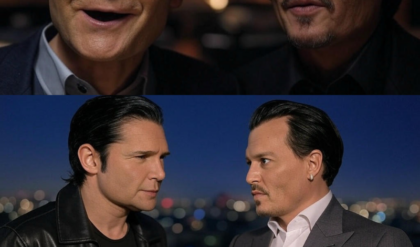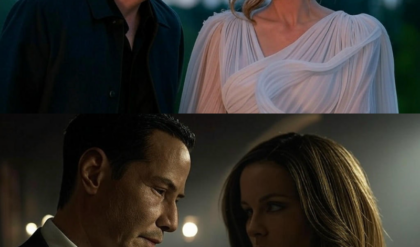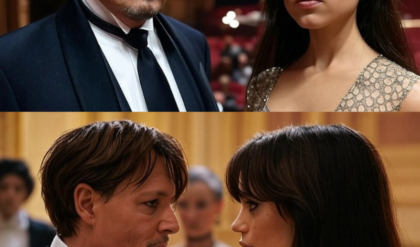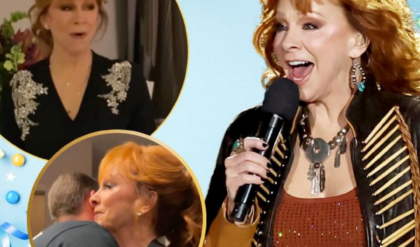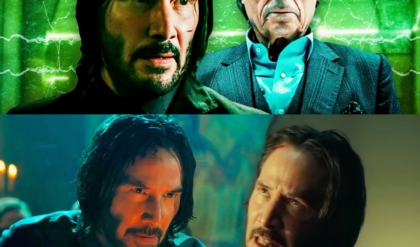Costume designer Mekel Bailey scoured London thrift stores to put together an anachronistic wardrobe of mismatched colors and prints to convey Martha’s roller-coaster of emotions.

Martha (Jessica Gunning), the riveting stalker from Netflix‘s buzzy “Baby Reindeer,” is unlike any character ever tackled by costume designer Mekel Bailey. She’s a complex, shape-shifting sociopath. But to get inside Martha’s chaotic inner world and reflect her changing moods, Bailey scoured London thrift stores and put together a wardrobe of mismatched colors and prints (he even threw in a few outfits that belonged to his grandmother).
“There’s moments when she’s angry and then there’s moments when she’s sad,” Bailey told IndieWire. “There’s moments when she’s loving and happy. So this roller coaster of emotions then played into the color palette and all these clashes of tones of prints with her as well. Understanding all of these different elements of Martha, understanding the shape side of it, and understanding the color. We then had a massive fitting day with Jess, and we literally just tried on everything.”
Martha’s introduction to Donny (Richard Gadd), the struggling comedian and barman with his own trauma to deal with, begins with a meet-strange scene in the pub. Martha sits whimpering at the bar, and Donny offers to lift her spirits with a cup of tea on the house. Suddenly, she flips her emotional switch and starts regaling him with a cock and bull story about owning her own law practice and being “a leading advisor to the government.”
Then, after Donny’s frustrating lack of success with his stand-up career, he’s treated to a bizarre series of performances by Martha that are conveyed in a montage marked by her child-like dress-up and upbeat monologues.
 ‘Baby Reindeer‘Ed Miller/Netflix
‘Baby Reindeer‘Ed Miller/Netflix
“In Episode 1, there were quite a few [wardrobe changes], including that beginning rotation,” Bailey said. “Maybe 15 individual, solid looks, including the court looks and the bedroom looks. It’s all positive because she’s trying to make a good impression. The first outfit you see is this very pinky pastel top, very skin tone, very young, makes you look very innocent. And then you see a lot of these reds, these bright purples, these greens coming through as well.
“But everything’s nice tones of the colors,” he continued. “Again, nothing offensive, nothing scary. Everything’s inviting alongside the makeup, as well, to complement. And she’s in her greatest state when you first see her, everything is a bit more put together, not as chaotic. It’s still somewhat her best version of herself with the fun times, as she calls it.”
Of course, we immediately recognize that there’s something not right about Martha. There’s pain and trauma there, going all the way back to her childhood. “There’s also this loss of care,” added Bailey, “when she starts to reveal the true Martha, when you see the layers of complexity to her. That’s when we draw out the color, that’s when it starts to be more subdued.
“More grays come in,” he continued, “especially if you see the grays in her nightie or at the bus stop scene: it’s like that gray kind of purple lilac with the love hearts on it. There’s that washed-out feeling to it, and those are the moments when she’s really at her worst, when the sadness really is coming through. But then you can see a lot of the prints and the animal tones. That’s predator Martha, when she’s lost it. And then she becomes angry Martha, with the black polka dot, with the red spots all over the jumpsuit.”
Martha (Jessica Gunning), the riveting stalker from Netflix‘s buzzy “Baby Reindeer,” is unlike any character ever tackled by costume designer Mekel Bailey. She’s a complex, shape-shifting sociopath. But to get inside Martha’s chaotic inner world and reflect her changing moods, Bailey scoured London thrift stores and put together a wardrobe of mismatched colors and prints (he even threw in a few outfits that belonged to his grandmother).
“There’s moments when she’s angry and then there’s moments when she’s sad,” Bailey told IndieWire. “There’s moments when she’s loving and happy. So this roller coaster of emotions then played into the color palette and all these clashes of tones of prints with her as well. Understanding all of these different elements of Martha, understanding the shape side of it, and understanding the color. We then had a massive fitting day with Jess, and we literally just tried on everything.”
Martha’s introduction to Donny (Richard Gadd), the struggling comedian and barman with his own trauma to deal with, begins with a meet-strange scene in the pub. Martha sits whimpering at the bar, and Donny offers to lift her spirits with a cup of tea on the house. Suddenly, she flips her emotional switch and starts regaling him with a cock and bull story about owning her own law practice and being “a leading advisor to the government.”
Then, after Donny’s frustrating lack of success with his stand-up career, he’s treated to a bizarre series of performances by Martha that are conveyed in a montage marked by her child-like dress-up and upbeat monologues.
 ‘Baby Reindeer‘Ed Miller/Netflix
‘Baby Reindeer‘Ed Miller/Netflix
“In Episode 1, there were quite a few [wardrobe changes], including that beginning rotation,” Bailey said. “Maybe 15 individual, solid looks, including the court looks and the bedroom looks. It’s all positive because she’s trying to make a good impression. The first outfit you see is this very pinky pastel top, very skin tone, very young, makes you look very innocent. And then you see a lot of these reds, these bright purples, these greens coming through as well.
“But everything’s nice tones of the colors,” he continued. “Again, nothing offensive, nothing scary. Everything’s inviting alongside the makeup, as well, to complement. And she’s in her greatest state when you first see her, everything is a bit more put together, not as chaotic. It’s still somewhat her best version of herself with the fun times, as she calls it.”
Of course, we immediately recognize that there’s something not right about Martha. There’s pain and trauma there, going all the way back to her childhood. “There’s also this loss of care,” added Bailey, “when she starts to reveal the true Martha, when you see the layers of complexity to her. That’s when we draw out the color, that’s when it starts to be more subdued.
“More grays come in,” he continued, “especially if you see the grays in her nightie or at the bus stop scene: it’s like that gray kind of purple lilac with the love hearts on it. There’s that washed-out feeling to it, and those are the moments when she’s really at her worst, when the sadness really is coming through. But then you can see a lot of the prints and the animal tones. That’s predator Martha, when she’s lost it. And then she becomes angry Martha, with the black polka dot, with the red spots all over the jumpsuit.”
Bailey said that Gunning was game the whole time. “She fully immersed herself in the role in every aspect of the craft,” he added. “She’s play-acting, but there’s a truth behind it.”
